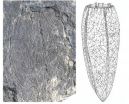(Press-News.org) In an article published in The Lancet Oncology, an NCI (US National Cancer Institute), NCRI (UK National Cancer Research Institute), and EORTC (European Organisation for Research and Treatment of Cancer) working group outline a practical risk-management approach for effective integration of biomarkers into cancer clinical trials. Their work provides the international community with a set of common principles by which biomarkers can be integrated into clinical trials, exchange of data can be facilitated, quality promoted, and research accelerated while simultaneously respecting local approaches and legislation.
Their risk-assessment approach for designing and conducting cancer clinical trials include risks to patient safety, operational risks, and biomarker development risks, and for each risk they evaluate possible consequences, provide solutions along with examples of these as well as references to helpful resources. Concerning protocol design, the working group recommends items that a protocol should include as well as items that should be assessed during protocol development. For the conduct of the trial, they make recommendations for the close monitoring of variability in test results, and they also make recommendations for particular aspects following completion of the trial.
Dr. Jacqueline Hall, who coordinated this NCI, NCRI, and EORTC working group says, "We readily acknowledge that in today's clinical trial landscape, many stakeholders play a role in clinical trials. These include regulators, public authorities, and patients, amongst others. By opening this discussion to others, we hope to find solutions to the varied challenges facing molecularly driven clinical research."
INFORMATION:
Support for this research came from the EORTC Charitable Trust and the UK Department of Health's National Institute for Health Research Biomedical Research Centres funding scheme.
NCI, NCRI and EORTC outline risk-assessment approach for biomarker-driven cancer clinical trials
A practical risk-management approach for effective integration of biomarkers into cancer clinical trials
2014-04-29
ELSE PRESS RELEASES FROM THIS DATE:
Mobile users may not buy into instant gratification cues
2014-04-29
Gimmicky contest ads and flashy free-prize messages may be an instant turnoff for mobile users, according to Penn State researchers.
In a study, a tempting offer of a free prize drawing for registering on a mobile website led users to distrust the site, said S. Shyam Sundar, Distinguished Professor of Communications and co-director of the Media Effects Research Laboratory.
Sundar said that in an increasingly information-loaded world, people tend to lean on cues, such as icons and messages, for decision-making shortcuts, called heuristics. However, some cues may elicit ...
Widespread tetraradial symmetry among early fossil sponges
2014-04-29
Sponges are usually considered to be the oldest living animals, having evolved before all other groups. The simplicity of their body structure and tissue organization has for many years made them candidates for the ancestral group of animals, and they have long been regarded as our best illustration of what the earliest animals would have looked like. This has been supported by genetic analyses, which suggest that sponges branched from other animals a very long time ago, deep in the Precambrian. Until recently, most zoologists believed that sponges were little more advanced ...
Dampening of positive feelings found to predict postpartum depressive symptoms
2014-04-29
A new KU Leuven study shows for the first time that the dampening or suppression of positive emotions plays an important role in the development of postpartum depression. This has implications for the treatment of depressed mothers.
We often forget that depression is characterised by both negative feelings and a lack of positive feelings. Researchers suspect that this may have to do with the way depression-prone individuals deal with positive or happy feelings. These individuals downplay or suppress positive feelings through a cognitive response style called dampening. ...
New research shows increasing ocean temperatures affecting coral reefs
2014-04-29
FORT LAUDERDALE-DAVIE, Fla. – It seems that coral reefs are experiencing something their human counterparts have been for years – a shrinking "empty nest" syndrome.
That's right – researchers have found that increasing ocean temperatures due to climate change will soon see reefs retaining and nurturing more of their own coral larvae, leaving large reef systems less interconnected.
The study brought together an international group of researchers from NSU's Oceanographic Center; the Australian Research Council Centre of Excellence for Coral Reef Studies and the School ...
Stress research in therapy dogs reveals animals' needs
2014-04-29
So-called animal-assisted therapy is being used increasingly often to treat physical and mental diseases in man. "For stressed persons, animals may serve as "social ice-breakers" and thus motivate them to enroll in therapy in the first place," says Lisa Maria Glenk, the lead author of the study. Scientific investigations on animal-assisted therapy do exist, but these have been largely confined to studying the effects of such therapy on man.
Lisa Maria Glenk conducts research at the Department of Comparative Medicine at Messerli Research Institute. She is a pioneer in ...
Drug monitoring information improves regimen adherence, Carnegie Mellon researchers say
2014-04-29
PITTSBURGH—Most people want to take mediations as prescribed, even if they sometimes need a little help remembering. For them, an automated system that monitors drug taking and provides feedback after the fact may be more useful than one that nags people when it is time to take a pill, researchers at Carnegie Mellon University say.
In a 10-month study of such a system in the homes of older adults with chronic health problems, the researchers found that adherence to a medication regimen improved when people had ready access to a digital display of their medication-taking ...
'Race, risk and behaviors: A type 2 diabetes update'
2014-04-29
Philadelphia, April 29, 2014 – Clinical Therapeutics features a special report in its April issue focusing primarily on the behavioral issues associated with patients' self-management of type 2 diabetes. "Diabetes, perhaps more so than any other chronic disease, requires people to significantly modify their behaviors—sometimes in ways that are contrary to their cultural norms and backgrounds—even when they don't 'feel' sick or experience symptoms of the disease," said John G. Ryan, Dr.PH., Topic Editor for Endocrinology and Diabetes, and guest editor for the April 2014 ...
Facial transplantation: Almost a decade out, surgeons prepare for burgeoning demand
2014-04-29
Plastic and reconstructive surgeons leading the first retrospective study of all known facial transplants worldwide conclude that the procedure is relatively safe, increasingly feasible, and a clear life-changer that can and should be offered to far more carefully selected patients.
Reporting in The Lancet online April 27, NYU Langone plastic and reconstructive surgeon and senior author Eduardo Rodriguez, MD, DDS, says results after nearly a decade of experience with what he calls the "Mount Everest" of medical-surgical treatments are "highly encouraging."
The review ...
Stroke risk reduced if brain blood vessel disorder is left alone
2014-04-29
Treating patients who suffer from a common condition that affects blood vessels in the brain increases their risk of stroke, a study has found.
People with a condition known as arteriovenous malformation (AVM) – which causes blood vessels in the brain to tangle – have a better outcome if doctors treat their symptoms only and not the AVM.
A team of doctors looked at the long-term outcome of patients with the condition, which is caused by abnormal connections between the arteries and veins in the brain.
They found that, over a 12 year period, patients who chose not ...
In a commanding position -- and now cheaper
2014-04-29
It is a requirement of the touchscreens for all our everyday gadgets that they are transparent and at the same time electrically conductive. Solar cells are also unable to operate without such a film, which allows sunlight to pass through it, but can also conduct the current generated. Conventional "transparent conductive oxide" (TCO) films consist of a mixture of indium and tin oxide. Indium in very much in demand in the electronics industry, but is rare, and therefore expensive.
A cheaper option (at least in terms of the materials used) employs zinc oxide mixed with ...
LAST 30 PRESS RELEASES:
Making lighter work of calculating fluid and heat flow
Normalizing blood sugar can halve heart attack risk
Lowering blood sugar cuts heart attack risk in people with prediabetes
Study links genetic variants to risk of blinding eye disease in premature infants
Non-opioid ‘pain sponge’ therapy halts cartilage degeneration and relieves chronic pain
AI can pick up cultural values by mimicking how kids learn
China’s ecological redlines offer fast track to 30 x 30 global conservation goal
Invisible indoor threats: emerging household contaminants and their growing risks to human health
Adding antibody treatment to chemo boosts outcomes for children with rare cancer
Germline pathogenic variants among women without a history of breast cancer
Tanning beds triple melanoma risk, potentially causing broad DNA damage
Unique bond identified as key to viral infection speed
Indoor tanning makes youthful skin much older on a genetic level
Mouse model sheds new light on the causes and potential solutions to human GI problems linked to muscular dystrophy
The Journal of Nuclear Medicine ahead-of-print tip sheet: December 12, 2025
Smarter tools for peering into the microscopic world
Applications open for funding to conduct research in the Kinsey Institute archives
Global measure underestimates the severity of food insecurity
Child survivors of critical illness are missing out on timely follow up care
Risk-based vs annual breast cancer screening / the WISDOM randomized clinical trial
University of Toronto launches Electric Vehicle Innovation Ontario to accelerate advanced EV technologies and build Canada’s innovation advantage
Early relapse predicts poor outcomes in aggressive blood cancer
American College of Lifestyle Medicine applauds two CMS models aligned with lifestyle medicine practice and reimbursement
Clinical trial finds cannabis use not a barrier to quitting nicotine vaping
Supplemental nutrition assistance program policies and food insecurity
Switching immune cells to “night mode” could limit damage after a heart attack, study suggests
URI-based Global RIghts Project report spotlights continued troubling trends in worldwide inhumane treatment
Neutrophils are less aggressive at night, explaining why nighttime heart attacks cause less damage than daytime events
Menopausal hormone therapy may not pose breast cancer risk for women with BRCA mutations
Mobile health tool may improve quality of life for adolescent and young adult breast cancer survivors
[Press-News.org] NCI, NCRI and EORTC outline risk-assessment approach for biomarker-driven cancer clinical trialsA practical risk-management approach for effective integration of biomarkers into cancer clinical trials



